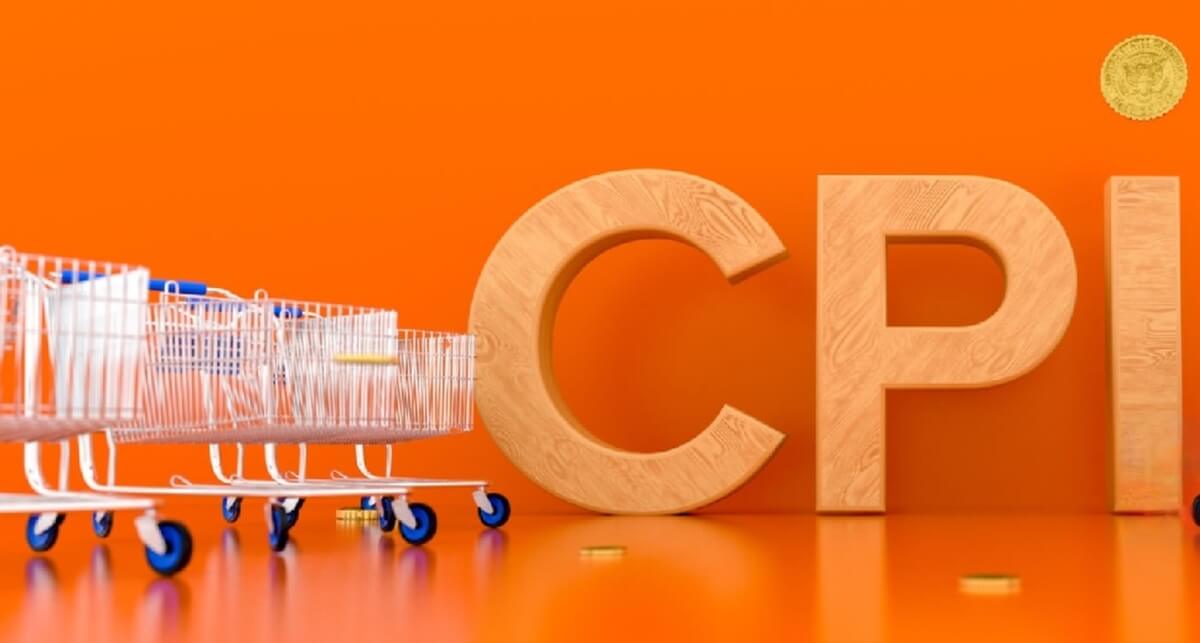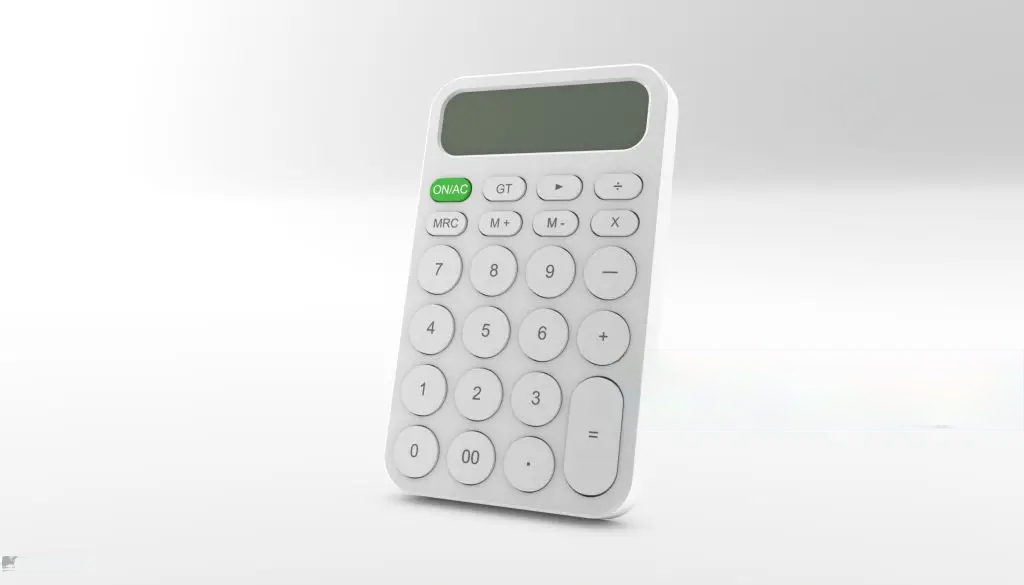
If you’ve dipped your toes into the world of Forex trading, you’ve probably come across the term “CPI” or Consumer Price Index. But what exactly does it mean?
Well, understanding what is CPI in Forex and how to trade it can be a valuable skill.
Consumer Price Index, a critical economic indicator, reflects changes in the average prices paid by consumers for goods and services. It’s released regularly and can significantly impact the Forex markets.
Here’s a guide to help you make sense of it all.
Definition of Consumer Price Index
The Consumer Price Index is like a financial thermometer for a country’s economy. It measures the average change over time in the prices paid by urban consumers for a market basket of consumer goods and services. In simpler terms, it tells us whether things are getting more expensive or cheaper for the average person.
Here’s how it works: Imagine a virtual shopping cart filled with things like food, clothing, rent, and gas. The CPI tracks the cost of these items over time. When the CPI goes up, it means those items are becoming more expensive. When it goes down, they’re getting cheaper.
What is CPI in Forex?
Now, you might wonder why this matters in Forex trading. Well, it’s because the CPI is a crucial tool for economic analysis. Forex, in essence, is all about currencies, and currency values are deeply tied to the health of a nation’s economy.
Central banks, like the Federal Reserve in the United States or the European Central Bank, use CPI data to make crucial decisions about monetary policy. If CPI is running too high and inflation seems like it’s getting out of control, central banks might raise interest rates to cool things down.
But why does this matter to Forex traders? Well, higher interest rates can attract foreign capital seeking better returns, which can strengthen a currency. So, when a central bank hints at rate hikes because of high CPI, you can bet that the Forex market will be buzzing with anticipation.
So, CPI gives traders a heads-up on potential currency movements.
Now that you know the meaning of CPI in Forex, let’s talk about how the CPI is calculated.
How to Calculate CPI

So, how does CPI work its magic? Let’s how to calculate CPI in a way that won’t require a degree in economics.
Understanding the CPI Formula
The CPI formula might look intimidating at first, but it’s just a way to compare the cost of a basket of goods and services over time. Here’s the formula, broken down:
CPI = (Cost of Basket in Current Year / Cost of Basket in Base Year) x 100
- Cost of Basket in Current Year: This is the total cost of a set of goods and services we’re tracking in the present year. Think of it as your shopping list for this year.
- Cost of Basket in Base Year: This is the total cost of the same set of goods and services, but in a reference year (the base year). It’s like looking at your old receipts to see what you paid for the same stuff a while back.
- Multiply by 100: This step just turns the result into a percentage. It’s like saying, “How much more or less expensive is this basket of goods compared to the base year, in percentage terms?”
Step-by-Step Calculation Process
- Choose a Base Year: To calculate CPI, you need a reference year. Pick a year to compare prices against. It’s like choosing a starting point for your journey.
- Create Your Basket: Make a list of goods and services that represent an average consumer’s spending. This “basket” could include things like groceries, rent, gas, and more.
- Gather Prices: Find the current prices for each item in your basket for the current year. This step involves a bit of research or data collection.
- Calculate the Cost of the Basket: Add up the prices of all the items in your basket for the current year. This gives you the “Cost of Basket in Current Year.”
- Find the Cost in the Base Year: Go back in time (figuratively) and find the prices of the same items in your basket for the base year. Add them up. This is the “Cost of Basket in Base Year.”
- Plug into the Formula: Now that you have both costs, plug them into the CPI formula:
CPI = (Cost of Basket in Current Year / Cost of Basket in Base Year) x 100
- Calculate: Do the math, and you’ll have your CPI for the current year.
Example
Now, in four simple steps, we’ll show you how to calculate the CPI by using the formula and calculation process stated above. This practical example will give you a basic understanding of the concept.
Step 1: Select the Basket of Goods and Services
If you are a Forex trader in Nigeria and you want to calculate the CPI for the United States, you need to start by selecting a basket of goods and services that represents what an average urban consumer buys.
Let’s include four items in your basket:
- Apples
- Gasoline
- T-shirts
- Movie Tickets
Step 2: Collect Price Data
Now, you need to collect price data for these items in two different time periods: the current year and a base year (the year against which you’ll compare prices). Let’s say your base year is 2020, and the current year is 2023.
In 2020, here are the prices for your selected items:
- Apples: $1.00 per pound
- Gasoline: $2.50 per gallon
- T-shirts: $10.00 each
- Movie Tickets: $12.00 each
In 2023, here are the prices for the same items:
- Apples: $1.20 per pound
- Gasoline: $3.00 per gallon
- T-shirts: $12.00 each
- Movie Tickets: $15.00 each
Step 3: Calculate the Price Index for Each Item
To calculate the price index for each item, you’ll use the following formula:
Price Index = (Current Year Price / Base Year Price) x 100
Using this formula, you calculate the price indices for each item in 2023 compared to 2020:
- Apples Price Index = ($1.20 / $1.00) x 100 = 120
- Gasoline Price Index = ($3.00 / $2.50) x 100 = 120
- T-shirts Price Index = ($12.00 / $10.00) x 100 = 120
- Movie Tickets Price Index = ($15.00 / $12.00) x 100 = 125
Step 4: Calculate the CPI
Now, to calculate the CPI for 2023, you’ll take an average of these price indices. Add up all the price indices and divide by the number of items in your basket:
CPI for 2023 = (120 + 120 + 120 + 125) / 4 = 121.25
So, in this simplified example, the CPI for 2023 is 121.25.
This means that, on average, the prices of the items in your basket have increased by about 21.25% compared to the base year 2020. It’s like saying, “Life got about 21% more expensive.”
Nigerian Forex traders can use this CPI data to make informed trading decisions, as changes in CPI can influence the US dollar’s value and impact currency exchange rates. For instance, if the CPI is rising faster than expected, it may lead to expectations of tighter monetary policy by the US Federal Reserve, potentially strengthening the US dollar against other currencies, including the Nigerian Naira.
When is CPI Released?
The release dates of CPI reports are anxiously awaited by policymakers, investors, Forex traders, and everyday folks alike, as they can impact interest rates, Forex, stocks and crypto markets, and even our everyday expenses.
In the United States, the Bureau of Labor Statistics (BLS) releases CPI data on a regular schedule. Typically, this data is published around the middle of each month and covers the previous month’s inflation rate. For example, the CPI data for August is typically released in mid-September. The frequency of release ensures that we have relatively up-to-date information on inflation trends.
In the United Kingdom, the Office for National Statistics (ONS) follows a similar pattern. CPI data is usually released on the 19th or 20th of each month, covering the previous month’s figures. This regularity allows economists, businesses, and consumers to track changes in prices and make informed decisions.
Preparing for CPI Releases
Okay, so you’ve heard that the CPI numbers are coming out soon. What do you do? First things first, preparation is key. Here’s how you can get ready:
- Stay Informed: Keep an eye on the economic calendar. You’ll want to know when the CPI data is scheduled to be released. This will prevent any last-minute surprises.
- Historical Data: Take a look at past CPI reports. Are there any trends or patterns you can spot? Understanding historical data can give you a sense of what to expect.
- Risk Management: Decide on your risk tolerance. How much are you willing to risk on this trade? Setting stop-loss orders can protect your capital if the market doesn’t react as expected.
Where to Access CPI Data
Accessing CPI data is easier than ever, thanks to the internet. Government agencies like the BLS in the United States and the ONS in the United Kingdom provide free access to their CPI reports on their websites.
You can also find these reports through financial news outlets and data providers like Bloomberg, Reuters, and CNBC usually cover it as well. They’ll break it down for you in simpler terms, so you don’t have to crunch all those numbers yourself.
But it’s not just about accessing the data; it’s about understanding what it means for you. You can find expert analysis and breakdowns of CPI reports in financial news articles, economic journals, and through discussions on social media and forums. But hey, you can also interpret them yourself.
Interpreting CPI Results
Here’s how you can interpret CPI results:
- Inflation Impact: Understand that CPI measures inflation. If the CPI is higher than expected, it can indicate rising prices. Lower than expected, and it might mean prices are stable.
- Currency Strength: Watch your currency pair. If you’re trading a currency pair involving the USD, for example, a higher CPI can strengthen the USD, while a lower CPI can weaken it.
- Market Sentiment: Keep an eye on market sentiment. Sometimes, traders react more to the deviation from expectations than the actual CPI number. It’s all about expectations versus reality.
This wealth of information empowers you to stay informed about economic trends and make informed decisions about your finances.
How Does CPI Affect the Forex Market?

At one point in time, you may have wondered about the forces that control the Forex market. One of the key players in this financial theater is the CPI and Forex traders keep a hawk eye on it.
Forex is all about the relative value of one currency against another. As mentioned earlier, when a country’s CPI is rising, it typically means that its currency’s purchasing power is eroding. In Forex terms, this is often seen as a signal of potential currency depreciation.
Imagine you’re holding U.S. dollars, and the U.S. CPI has been climbing. This could lead Forex traders to believe that the dollar’s value might decrease compared to other currencies. As a result, they might start selling off their dollars, which could lead to a drop in its exchange rate.
Conversely, if a country’s CPI is stable or falling, it might signal a stronger currency in the Forex market. Traders may see it as a sign that the central bank won’t rush to change interest rates, which can make that currency more attractive.
Read also! How Does Monetary Policy Influence the Forex Market?
How to Trade CPI in Forex
CPI data can be a treasure trove for forex traders. Here are two popular trading strategies:
1. Trend Following Strategies
For example, when CPI data is released, and it shows higher inflation than expected, this could indicate a weakening currency. A trend-following strategy here would be to sell that currency. Ride the wave of the trend and exit when it starts to reverse.
Example – Trend Following (Short Trade)
- Initial Situation: EUR/USD is trading at 1.1500.
- CPI Release: CPI data shows higher inflation in the U.S., causing initial volatility.
- Trend Formation: EUR/USD starts moving steadily upwards, breaking through resistance levels.
- Trend Confirmation: The pair continues its upward trajectory over several days.
- Trade: A trader, following a trend-following strategy, enters a long (buy) position at 1.1550.
- Exit: The trader exits the trade at 1.1700 as the trend begins to show signs of weakening.
2. Range Trading Strategies
Now, imagine CPI comes in lower than expected, suggesting a stronger currency. In this scenario, a range trading strategy might be your go-to move. Buy when the currency hits the bottom of its range and sell when it nears the top. The key here is to stay within that range until there’s a clear breakout.
Example – Range Trading (Buy Low, Sell High)
- Initial Situation: EUR/USD is trading in a well-defined range between 1.1600 and 1.1700.
- CPI Release: CPI data shows lower inflation in the Eurozone, causing initial uncertainty.
- Range Trade Setup: The trader buys EUR/USD at 1.1610 (near the lower boundary of the range) expecting a temporary bounce.
- Price Movement: EUR/USD bounces up to 1.1680 within a day.
- Exit Strategy: The trader sells their position at 1.1680 (near the upper boundary of the range) to lock in profit.
- Risk Management: A stop-loss order is placed just below 1.1590 in case the market doesn’t follow the expected range.
In these examples, the Trend Following strategy capitalizes on an initial trend set by the CPI data, while the Range Trading strategy leverages the currency pair’s movements within a predefined range. Remember, the key to successful trading is not just the strategy but also risk management and the ability to adapt to changing market conditions.
Risk Management in CPI-Driven Trades
Trading isn’t all about profit; it’s also about protecting your capital. When dealing with CPI-driven trades, here’s how you can manage risks:
- Set Stop-Loss Orders: These are like safety nets. Set a predetermined price level where you’ll exit a trade if it goes against you. It’s like having a lifeguard at the beach – it can save you from bigger losses.
- Use Proper Position Sizing: Never risk more than you can afford to lose on a single trade. A common rule of thumb is to risk no more than 2% of your trading capital on any trade.
- Diversification: Don’t put all your eggs in one basket. Diversify your trades to spread risk across different currency pairs.
Practical Tips for Trading CPI Announcements
Trading around CPI releases can be intense, so here are some practical tips to keep your cool:
- Know the Schedule: CPI reports are usually released on a set schedule. Know when they’re coming so you can plan your trades accordingly.
- Wait for Confirmation: Sometimes, the initial market reaction to CPI data can be erratic. Wait for confirmation before jumping in.
- Stay Informed: Keep an eye on economic calendars, news, and central bank statements. These can provide additional context for CPI data.
- Practice Patience: You don’t need to trade every CPI release. Choose your battles wisely.
Take Away
In conclusion, trading CPI in Forex can be a valuable addition to your trading arsenal. Remember to practice sound risk management, stay informed, and adapt your strategy to market conditions. With experience, you’ll become more adept at navigating CPI releases and seizing opportunities in the ever-changing world of trading.
Happy trading, and may the pips be ever in your favor!
